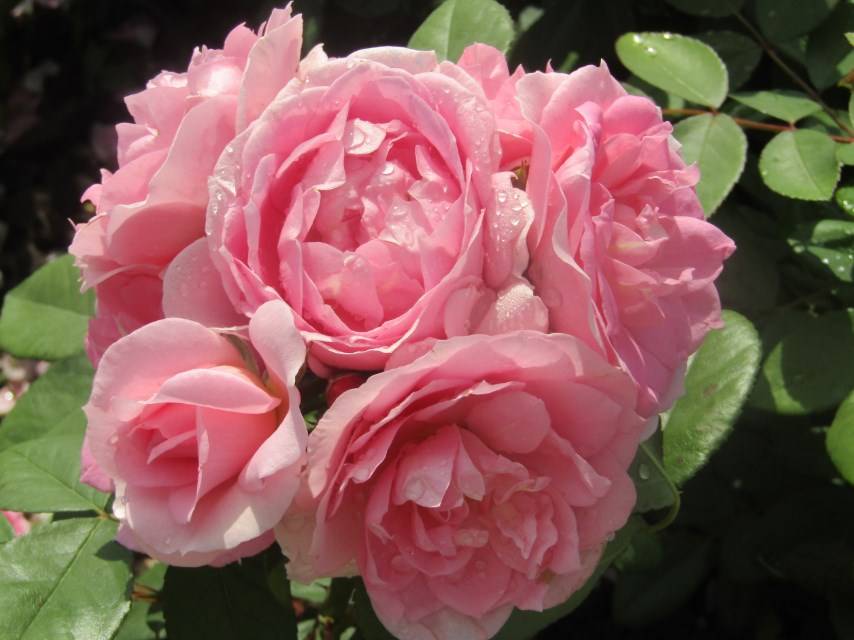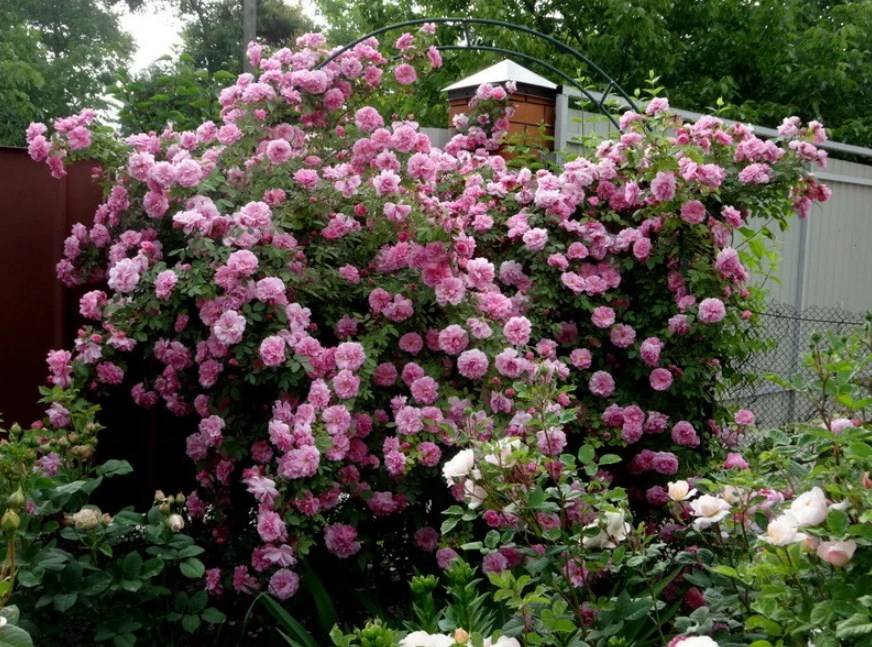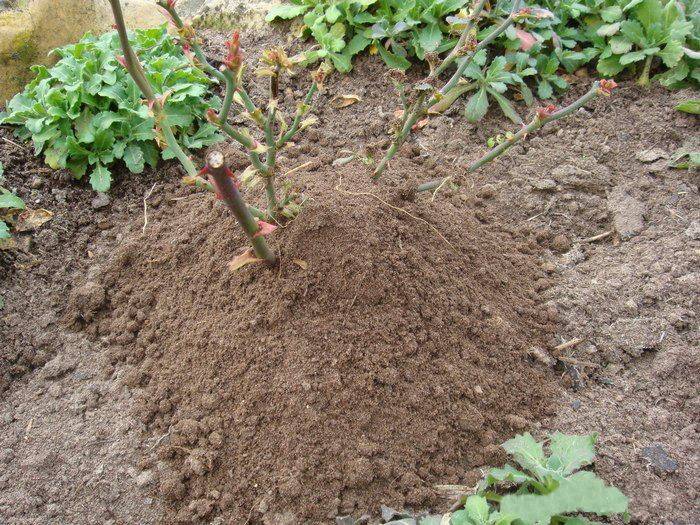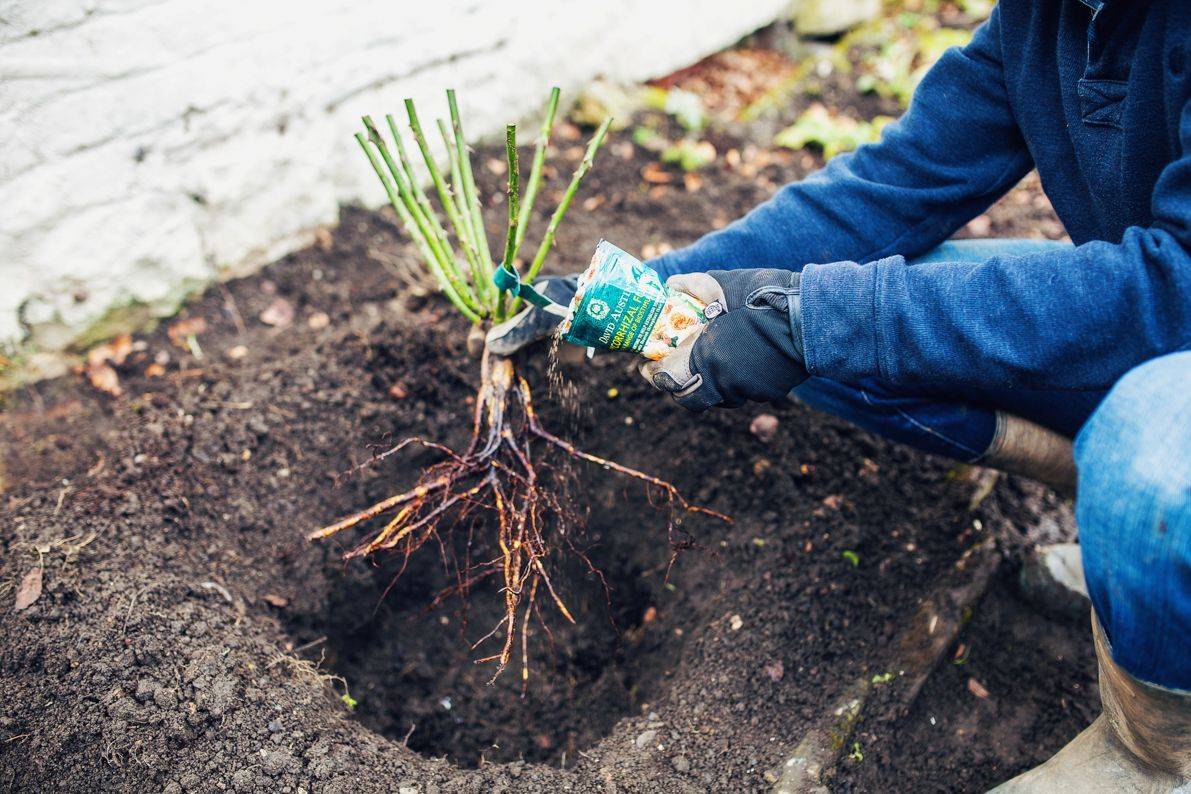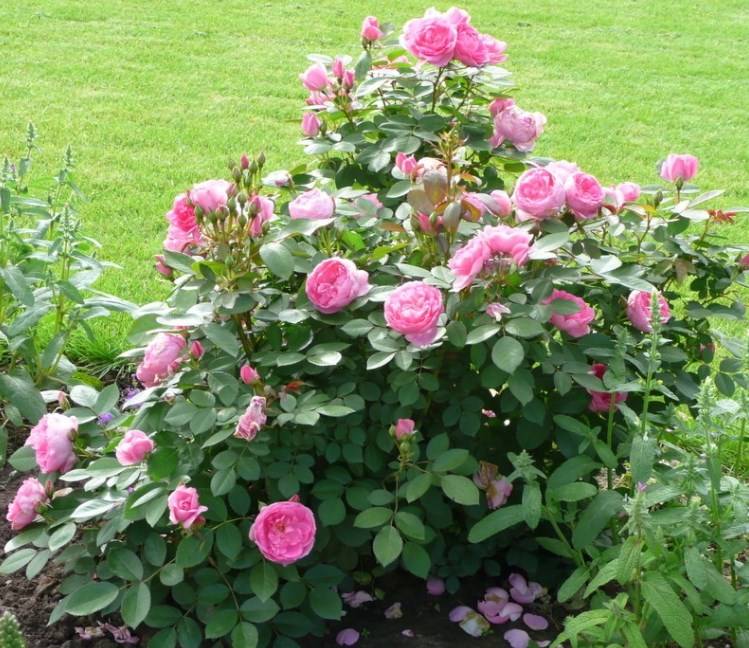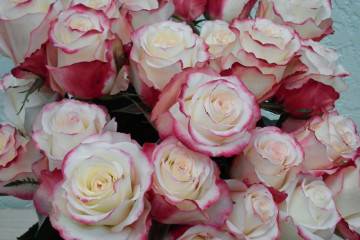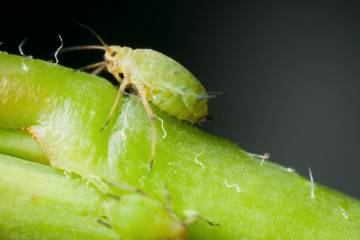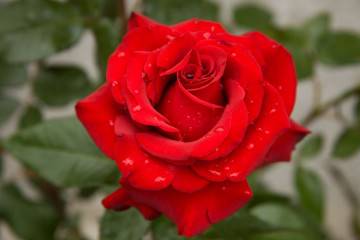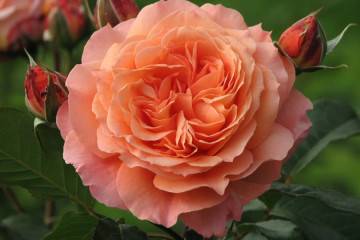Rose Prairie Joy - characteristics and description of the bush
Content:
The Prairie Joy rose belongs to the group of Canadian rose bushes. Their characteristic feature is resistance to temperature changes. In landscape design, they are mainly used for decorating hedges. Due to their large size, the bushes look spectacular in both single and group planting.
Rose Prairie Joy (77A4J401, RSM S3): description and characteristics
Joy Prairie is a rose that was introduced to the public in 1977. Its author is the famous breeder G. Marshall from Canada. The variety received world recognition almost 20 years later. In 1999 he was awarded the title of the best scrub of the year.
The plant reaches a height of 1-1.5 m, the diameter of the bush does not exceed 1.5 m. A powerful densely leafy crown is formed. The shoots are characterized by an arched shape, the number of thorns is moderate. Subject to agrotechnical measures, flowering is lush and long, from mid-June to the first frost. The buds are of medium size, 6-8 cm in diameter, they are grouped in clusters of 10-15 pcs. Adults of the species can form brushes and up to 30 buds.
The surface of the petals is densely double, their color is pearl pink with a dark core. During flowering, the buds exude an unsaturated apple scent. The plant is afraid of precipitation, from the rains the flowers are deformed and die.
The frost resistance indicators are excellent. Bushes without shelter are able to withstand temperature drops down to -40 ° C.
Advantages and disadvantages of the variety
The Canadian rose Prairie Joy is not as exquisite as hybrid tea varieties, but it has a large number of advantageous features, which has earned the love of flower growers. The main advantages of the species include:
- unpretentious care and cultivation;
- strong immunity and endurance;
- excellent indicators of winter hardiness;
- the formation of beautiful flowers of a rich color;
- does not need shelter for the winter;
- well cuttings and further develops on its own root system.
As for the disadvantages, the variety does not tolerate high humidity, especially rain.
Use in landscape design
Rose Prairie Joy is mainly used to decorate parks and gardens. This is due to the fact that the plant uniquely combines excellent decorative qualities and unpretentious cultivation. Shrubs can be the basis of a composition, blending perfectly with a green lawn.
Growing a flower, how to plant it in open ground
The variety is thermophilic, it is recommended to plant it in well-lit areas. It should also be well ventilated, but at the same time protected from wind gusts and drafts. However, the bushes will willingly grow in partial shade conditions.
For a successful landing, it is recommended to properly prepare the landing pit. Fertile soil contains 10% compost mixture, 30% peat and 60% loam.
As practice shows, a rose can readily grow on soils with a poor composition.
When planting, the size of the pit should be approximately 30 × 30 cm.If the root system of the cuttings is open, then the seedling must first be placed in a growth stimulator for about 3-4 hours.The interval between bushes in group plantings should be at least 0.6 m.
For the development of additional stems, the root collar during planting is buried 3 cm below the soil surface.
For a week after planting, you need to carefully monitor the condition of the bush. Pests should not be allowed to appear on it.
In rainy weather, it is recommended to irrigate the bushes with fungicidal solutions to prevent the development of fungal diseases.
Plant care
Rose Prairie Joy has no specific care requirements. The agro-technical complex includes regular and moderate watering, timely pruning, application of mineral and organic fertilizers, weed control and disease prevention.
The plant is frost and drought resistant, but, despite this, it needs to be watered twice a week. Especially on hot summer days, it is recommended to increase the frequency of watering.
With the arrival of autumn, to slow down sap flow, the number of waterings is reduced. Water must be used warm, settled and free of chlorine. About 2 buckets are consumed for each bush.
Formative and sanitary pruning is carried out in the spring before bud formation begins. During sanitary pruning, damaged, old and diseased shoots are removed.
Also, you can not do without regular feeding. The following schedule must be observed:
- in the spring, to build up green mass and strengthen the root system, nitrogen-containing compounds are introduced into the soil;
- in summer and autumn, it is advisable to use industrial preparations, which contain potassium and phosphorus.
Flower propagation
Canadian roses are recommended to give preference to residents of the northern regions, since their frost resistance indicators are simply excellent. You can start breeding a bush when the bush grows on the site for 4-5 years.
For propagation by cuttings, faded July shoots are used. Their length should be about 20-23 cm. On each seedling 2 quintuple leaves are left. Experienced growers recommend immediately planting the stalk in a permanent place so as not to disturb the plant later.
An equally effective way of reproduction is by layering. This approach allows you to get an independent culture for the next growing season. Activities should be carried out in the spring, even before bud break. To implement, you need to do the following:
- One-year-old shoots are gently bent to the soil surface.
- To securely fix them, they are pinned with metal, plastic or wooden staples.
- The upper part is fixed in an upright position by tying it to a peg.
It follows that even a novice florist can cope with the task at hand.
Diseases, pests and ways to control them
The plant is resistant to the harmful effects of powdery mildew and black spot. Pests also rarely attack a park rose.For prevention, it is necessary to regularly and, most importantly, correctly prune, since the thickening of the bush contributes to the development of pathogenic microflora in it, regular and moderate watering, as well as systematic and dosed application of mineral, organic and complex fertilizers.
Rose Prairie Joy has many advantageous features, thanks to which it has earned worldwide love. It is possible to grow it not only for an experienced florist, but also for a beginner. One of the main tasks is to purchase high-quality planting material. This can be done in specialized nurseries or with friends.
